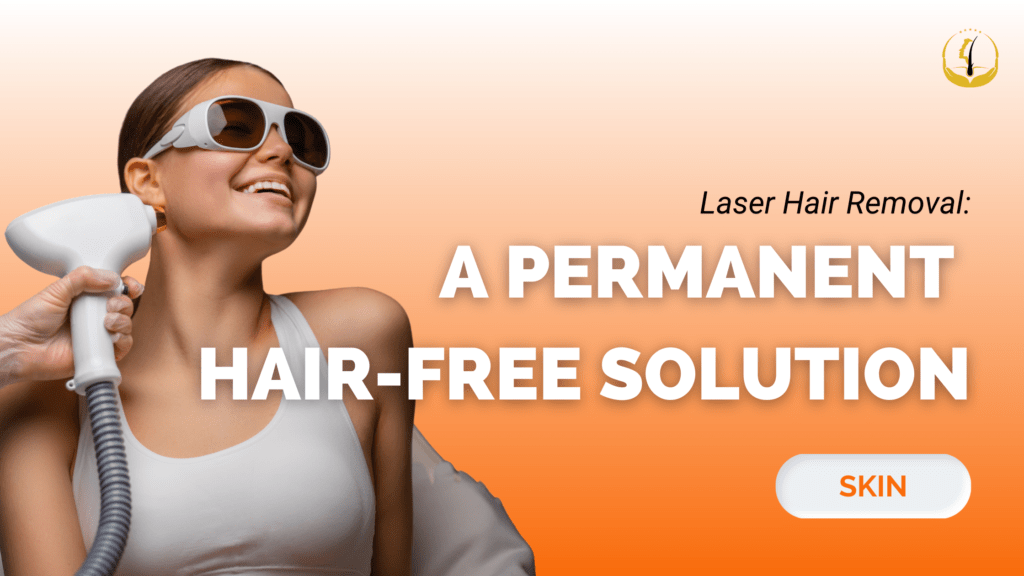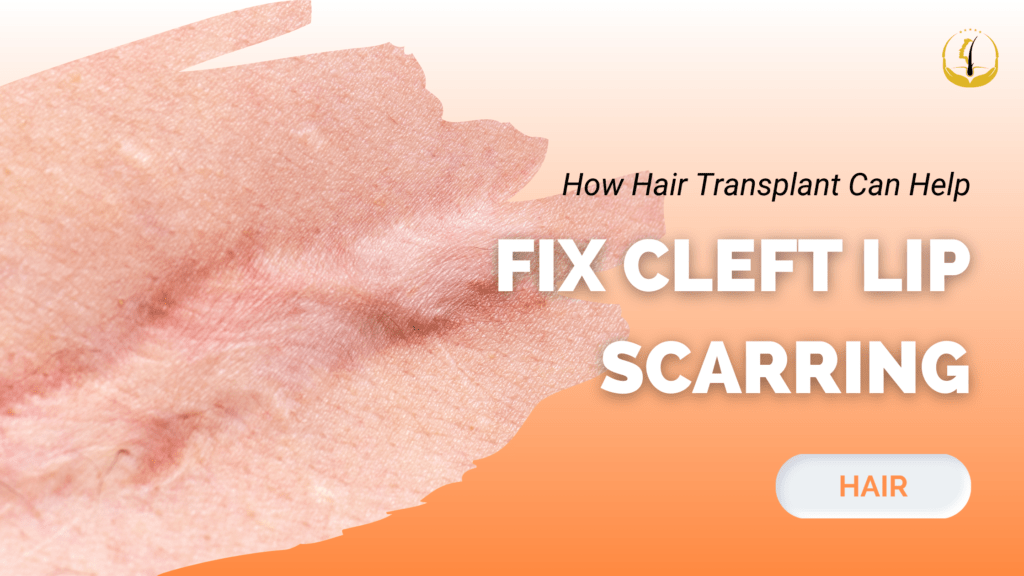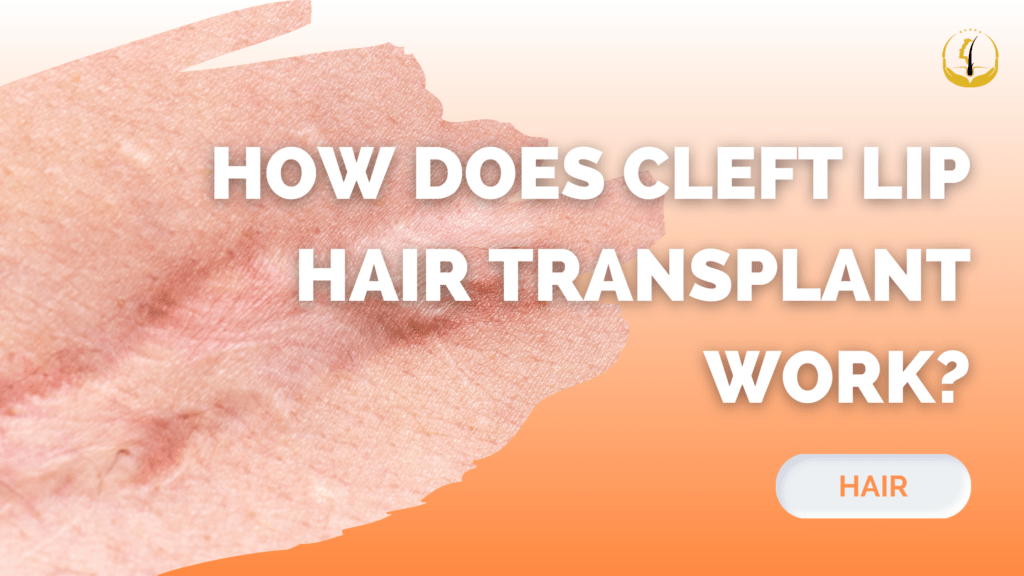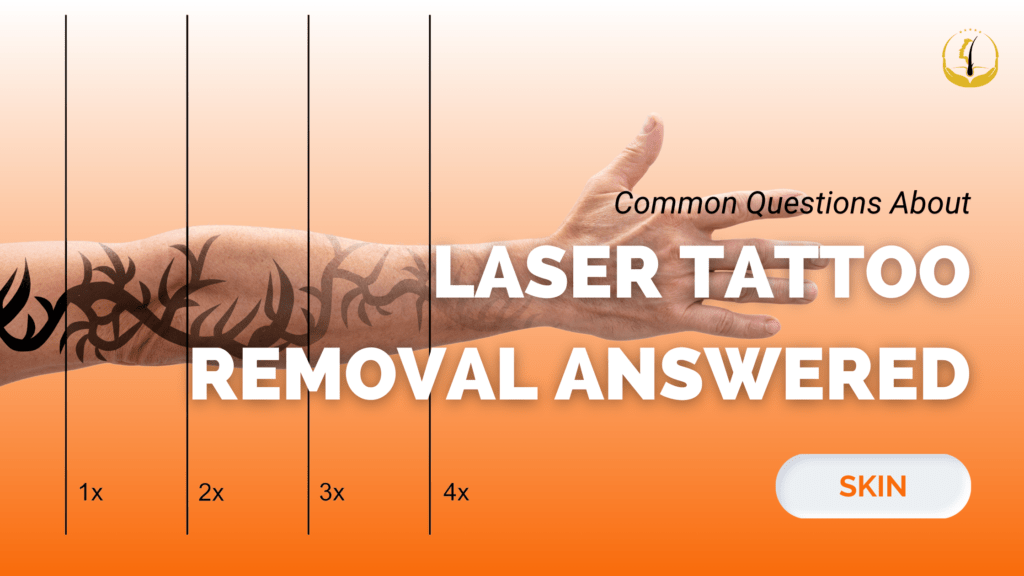The Impact of a Weak Donor Area in Hair Transplants

Hair loss is a common concern for many individuals, and hair transplant procedures have emerged as an effective solution to restore lost hair and confidence. A crucial factor in the success of a hair transplant is the quality of the donor area, which serves as the source of healthy hair follicles for transplantation. However, what happens if the donor area is weak? Keep reading to find out! The donor area, typically located at the back and sides of the scalp, is known for its resistance to hair loss. This region is selected for hair extraction due to its genetically determined ability to retain hair even in the presence of androgenetic alopecia, commonly referred to as male or female pattern baldness. Hair follicles harvested from the donor area retain their inherent resistance to the factors that cause hair loss, making them ideal for transplantation. Weak Donor Area in Hair Transplant Limited Hair Availability: A weak donor area may have a reduced density of healthy hair follicles available for transplantation. This limitation can significantly affect the number of grafts that can be harvested and transplanted, potentially leading to less satisfactory results in terms of hair coverage. Compromised Aesthetics: With fewer viable hair follicles to work with, achieving a natural and aesthetically pleasing hairline and overall appearance can become challenging. A weak donor area may result in an uneven distribution of transplanted hair, making the outcome less harmonious. Future Hair Loss Concerns: If the donor area is weak due to underlying medical conditions or genetic predisposition, there is a risk that even the transplanted hair may be susceptible to future hair loss. This can lead to an undesirable scenario where transplanted hair also thins over time, requiring further procedures to maintain the desired look. Scarring and Healing Issues: Extracting hair follicles from a weak donor area can lead to increased trauma to the scalp and potential scarring. Proper healing may be compromised, impacting the overall success of the transplant procedure. Overcoming Challenges for a Successful Hair Transplant Despite the challenges posed by a weak donor area, advancements in hair transplant techniques offer some solutions: SMART™ Follicular Unit Excision (SMART™ FUE): SMART™ FUE allows for the extraction of individual hair follicles, reducing the risk of scarring and trauma. This technique is especially beneficial for patients with a weak donor area, and is only available at GLOJAS. Body Hair Transplants: In cases where the scalp donor area is weak, hair follicles from other parts of the body, such as the chest or beard, can be utilized for transplantation. However, the characteristics of body hair may differ from scalp hair. Combined Treatments: Hair transplant surgeons may recommend combining hair transplant procedures with other treatments, such as medical therapies or PRP (platelet-rich plasma) therapy, to enhance the overall results and minimize future hair loss. A weak donor area in a hair transplant procedure can present challenges, potentially affecting the quantity and quality of transplanted hair. However, with advancements in hair restoration techniques and careful planning by experienced surgeons, individuals with weak donor areas can still achieve satisfactory and natural-looking results. Consulting with GLOJAS hair specialists is essential to assess the suitability of the procedure and develop a personalized treatment plan that addresses individual concerns and goals. At Glojas, we welcome clients to reach out to us directly to schedule a free initial consultation. We offer guidance and valuable insights on how best to address your specific challenges. Let us assist you in navigating your journey with confidence and clarity.
Laser Hair Removal: A Permanent Hair Removal Solution

Are you tired of the constant hassle of shaving, waxing, or plucking unwanted hair? Do you dream of smooth, hair-free skin without the pain and inconvenience of traditional hair removal methods? If so, laser hair removal might be the answer you’ve been looking for. In this blog, we’ll delve into the world of laser hair removal, exploring its numerous benefits, suitability for both women and men, and its effectiveness. What is Laser Hair Removal? Laser hair removal is a revolutionary technique that offers a permanent solution to unwanted hair. Unlike temporary methods such as shaving or waxing, laser hair removal targets the hair follicles beneath the skin’s surface, effectively preventing future hair growth. This means you can say goodbye to those pesky razor burns and ingrown hairs, and hello to hair-free skin! Benefits of Laser Hair Removal Permanent Hair Removal: One of the most significant advantages of laser hair removal is its long-lasting results. After a series of sessions, many individuals experience permanent hair reduction in the treated area, resulting in smooth, hair-free skin. Painless Hair Removal: Unlike waxing or plucking, which can be painful and uncomfortable, laser hair removal is relatively painless. Most people describe the sensation as a mild stinging or tingling, similar to the snap of a rubber band. Suitable for All Genders: Laser hair removal is not limited to a specific gender. Whether you’re a woman looking to eliminate unwanted facial or bikini line hair or a man seeking a smooth chest or back, laser hair removal is an option for everyone. Laser Hair Removal for Women Women often opt for laser hair removal to target various areas, including: Facial Hair Removal: Say goodbye to unwanted facial hair on your upper lip, chin, or sideburns with laser hair removal. Brazilian Laser Hair Removal: Achieve a clean and smooth look in your intimate area with Brazilian laser hair removal, a popular choice among women. Full Body Laser Hair Removal: From legs to arms and everything in between, full-body laser hair removal offers a comprehensive solution for women seeking hair-free skin. Laser Hair Removal for Men Men can also benefit from laser hair removal, with common treatment areas including: Chest and Back: Get rid of excess chest and back hair for a cleaner and more attractive appearance. Facial Hair: Men can use laser hair removal to target areas like the beard, neck, or even the dreaded unibrow. Underarms: Eliminate underarm hair for improved hygiene and reduced sweat and odor. Laser Hair Removal for Sensitive Skin If you have sensitive skin, you may worry about the potential side effects of laser hair removal. Fortunately, modern laser technology has evolved to accommodate sensitive skin types. Diode and Nd:YAG lasers are known for being gentler on the skin, making them suitable options for individuals with sensitive skin. Laser Hair Removal Aftercare To ensure the best results and maintain your hair-free skin, it’s crucial to follow proper aftercare practices: Avoid Sun Exposure: Protect treated areas from direct sunlight for a few weeks after each session to prevent skin damage. Moisturize: Keep your skin hydrated with a fragrance-free, hypoallergenic moisturizer to soothe any post-treatment redness or irritation. Avoid Hot Showers and Steam: Refrain from hot baths, showers, saunas, or steam rooms immediately after treatment to prevent skin irritation. Be Patient: Laser hair removal requires multiple sessions for optimal results, as it is most effective during the hair growth phase. Stick to your treatment plan for the best outcome. Laser hair removal is a game-changer when it comes to achieving permanent hair-free skin. With its numerous benefits, suitability for both women and men, and versatility in treating various body areas, it’s no wonder why so many people are opting for this innovative solution. Whether you’re interested in Brazilian laser hair removal, facial hair removal, or full-body treatments, laser hair removal offers a painless and long-lasting solution. Just remember to follow the proper aftercare instructions to maximize your results. Say goodbye to the never-ending cycle of shaving and waxing and hello to a future of smooth, hair-free skin with laser hair removal! Click the link to learn more about Laser Hair Removal: “Laser Hair Removal What To Know” At Glojas, we welcome clients to reach out to us directly to schedule a free initial consultation. We offer guidance and valuable insights on how best to address your specific challenges. Let us assist you in navigating your journey with confidence and clarity.
Why Choosing the Best Clinic is Essential for Successful Breast Reduction

Are you fed-up with your huge breasts and looking for a permanent solution? If yes, then you should know that breast reduction surgery is the only safe and reliable treatment that offers permanent results. Visit only a renowned cosmetic clinic like GLOJAS for your surgery. This surgery is an amazing treatment for women who have extra-large, oversized breasts. It includes expelling extra amounts of fat, skin and glandular tissue from the bust to enhance shape and reduce the challenges caused by larger than average size bosoms. With reduction surgery performed in a renowned cosmetic clinic, women can get an appealing bust line and rightly shaped bosoms that are far more proportionate to their body. Advantages Of Getting Breast Reduction at GLOJAS GLOJAS clinic is known to provide powerful and outstanding outcomes for surgery. Cosmetic specialists offering their top-notch services in GLOJAS are highly experienced in giving the latest reduction surgery methods to women of all ages. We have intensive training and surgical knowledge in taking care of various types of breast surgeries to give women desired shape and size. Renowned cosmetic clinic, GLOJAS is registered by governments and we concentrate on giving ideal outcomes and patient safety. Our specialists utilize the latest techniques and proven methods. Techniques Available For Breast Reduction Surgery· Vertical Only Reduction Mammoplasty This method includes making mushroom shaped cuts, one around the areola and other in the inframammary fold. This surgery method is right for women who wish to expel around 800 grams from each breast. This method can lead to a highlighting, alluring, and bosom shape with minimal scarring. In this method, considerable sensory innervation to the nipple-areola complex is performed as well. Another crucial part of vertical mammoplasty, is connected with the body’s capacity to contract skin and then reshape the bosoms. In a few cases, a revision cosmetic surgery might be required depending on the amount of skin that failed to shrink. Liposuction Only Breast Reduction This is a safe method that is known to expel additional fat stored away in the bosoms. Scarring is minimal with this type of breast reduction surgery, major cuts or incisions are also not required. The liposuction cannula is pierced through a little cut, which mends soon without leaving behind any real scars. There are additionally no sensory changes in the areola area. This method is perfect for younger women with satisfactory skin tone. Also, this strategy is best for those women who are searching for a complete solution for huge, larger-than-average-sized bosoms. The surgical methodology lifts the bosoms by a remarkable degree. This is why the reduction of breast size is more than half the original size. Consult for FREE at GLOJAS Clinic.
Can Smoking & Alcohol Hinder Hair Transplant Growth?

Smoking or alcohol consumption can have adverse effects on the outcomes of hair transplant. Before and after the surgery, you’re expected to stay away from both of these harmful habits. The surgeon at GLOJAS will ask you questions related to smoking, alcohol consumption or medicines that you take before the surgery. Hair restoration treatment is performed to remove baldness problems. It’s a minimal invasive surgical procedure that is performed in multiple sessions and outpatient basis. There are some precautions and steps recommended by the surgeon that you need to follow before and after the treatment. The surgeon will also ask you minor, but important details about your lifestyle. Some important questions about your lifestyle that will be asked by the surgeon Do you smoke? Do you Consume alcohol? What medicines do you take? Do you utilize any type of herbal food item? These questions are generally asked not only before hair restoration surgery, but in fact before any kind of surgery. Many people wonder what the relation between smoking, drinking and surgery is. Or, why do they need to disclose the medications, herbal products or vitamin supplements they take in front of the transplant surgeon? The major connection between these lifestyle habits of a person and surgery is that these might cause excessive bleeding before and after the operation. This is the main reason why doctor will ask some thorough questions like Do you smoke if yes, then how much and since when? Do you drink alcohol if yes, then how many times in a day and since when? Do you use any banned recreational drugs if yes, then how many times in a day and since when? Are there any prescribed medicines that you take? Do you take any non-prescribed medicines or painkillers? Do you take any vitamin supplements? Do you consume any herbal products? While these questions are asked, the patient needs to be honest and straightforward in their answers, regardless of how embarrassed he/she feels. Patients who realize that smoking and alcohol consumption are usually viewed as unhealthy habits might be unwilling to admit to the surgeon that they’ve these bad habits, or to admit the amount or rate they drink or smoke. In a pre-surgery examination, the surgeon needs true answers for all of these questions. The intention of the surgeon is not to ask to change the habits of the patient, but to ensure that these habits don’t interfere in the Hair Transplant surgery results and don’t cause excessive bleeding before or after the treatment session. Patients must be genuinely honest while speaking to the top hair transplant surgeon at GLOJAS. They must tell their surgeons all the prescribed or over-the-counter medications he/she has been taking. The patient should also give details about herbal products, or vitamin supplements they have been consuming. In some cases, it’s possible that the patients might not remember the name of the medicines they have been consuming, so the surgeon may ask patients to show the medicines or ask them to get the name of the medicine. Consult for FREE at GLOJAS Hair Specialist Clinic. We provide the best solution-oriented hair transplant with our specialist doctors experts in their fields, treating all of our patients with honest, trustworthy, ethical, and equal service of the highest quality, meeting all the required national and international standards.
The Secret to Irresistible Lips: Dermal Fillers

Lips play a defining role in making a face look beautiful. Not everyone has the right shape of lips and with aging, the shape of lips starts becoming unattractive. However, there’s an amazing option of cosmetic treatment such as Dermal Fillers that can make your lips look beautiful again. As the aging process starts showing its effects on the facial area. One of the primary things females do is to search for options that can improve their looks, especially the lips. Throughout the years, lips lose their definition, volume reduces and they end up becoming thinner. Besides Botox, lip augmentation has turned out to be a standout amongst the most commonly requested cosmetic procedures, and has turned out to be quite popular among women of all ages. Many females are searching for fuller and more exotic lips, and we can get these by utilizing dermal fillers. As we grow older, both of our lips lose volume and definition. By getting a basic, safe dermal filler treatment you can add volume and definition to your thin lips. And in addition to this, the treatment can likewise maintain a balance between uneven lips and diminish the appearance of fine, vertical lines around the mouth. Why Should You Choose Lip Enhancements? To give more volume to the lips To achieve fuller, plumper lips To maintain an ideal balance between asymmetrical or lopsided lips Small, thin, or flat lips can look better by adding volume To provide volume to either a thin lower or upper lip Improving the shape and definition of the lips Dermal fillers are an awesome solution to enhance the look of thin or sagging lips, and this will improve and adjust your facial components in the meantime. At renowned cosmetic clinics, before any treatment, the expert will talk about your desires, and reveal to you which filler will be utilized to achieve your demands. A completely trained and qualified cosmetic surgeon like at GLOJAS will always focus on the state of the lips, and not simply their size. Women often wish to get a natural-looking lip treatment, so it’s vital to utilize delicate dermal fillers. Areas That Will Improve After Dermal Fillers Provides fullness and volume to upper and lower lip The lip border or outline – a definition and width will be provided by filler The smoker’s lines around the mouth that result in lipstick bleeding lines Meaning of the cupids bow – filler includes definition and molding Filler adds definition and contouring to the cupids bow Recovery There are no side effects of the treatment, but if any develop then they’ll also subside after a few days. Within a couple of days, any redness in the treated area will subside Inside two or three days, any swelling will settle down. There’ll likely be less bruising or swelling compared to other treatments. Within a couple of days, you can get rid of lumps or bumps by doing a gentle massage in that area. The day after the treatment, the lips may swell somewhat, so it’s a smart move to have the surgery at the end of the week, or during holidays when you have several days for recovery. Consult for FREE at GLOJAS Clinic.
Essential Things to Know Before Getting Lip Fillers

Lip fillers have become increasingly popular in recent years, with more individuals seeking that perfect pout. While lip augmentation can be a fantastic way to enhance your natural beauty, it’s essential to be well-informed before taking the plunge. In this comprehensive guide, we’ll explore more into the essential aspects of lip fillers and provide you with five crucial things to know before getting lip fillers. Whether you’re considering lip injections for the first time or looking to refine your knowledge, this guide will help you make informed decisions. What Are Lip Fillers? Lip fillers, also known as dermal fillers for lips, are non-surgical cosmetic procedures designed to add volume, shape, and definition to the lips. They typically involve the injection of a dermal filler substance, most commonly hyaluronic acid, into the lips. Hyaluronic acid is a naturally occurring substance in the body, making it a safe and well-tolerated choice for lip enhancement. Before opting for lip fillers, it’s crucial to understand the purpose of the treatment. Lip augmentation can address various concerns, including thin lips, asymmetry, or a desire for more defined contours. Discuss your goals and expectations with a qualified and experienced practitioner to ensure your desired outcomes are achievable. The Lip Filler Procedure: What to Expect Knowing what to expect during the lip filler procedure is essential for a stress-free experience. Typically, the process involves the following steps: Consultation: Your journey begins with a consultation with a licensed practitioner. During this session, you will discuss your goals, medical history, and any concerns you may have. Your practitioner will assess your suitability for the procedure and create a personalized treatment plan. Preparation: Before the procedure, your lips may be numbed with a local anesthetic to minimize discomfort during the injections. Injections: The dermal filler is carefully injected into specific areas of your lips to achieve the desired look. The process is precise, with your practitioner ensuring symmetry and balance. Results: You will see immediate results, although there may be some initial swelling and redness. However, these side effects are typically temporary and subside within a few days. Lip Enhancement vs. Lip Plumping It’s important to know the difference between lip enhancement and lip plumping when considering lip fillers. Lip enhancement focuses on adding subtle volume and improving lip shape while maintaining a natural appearance. It aims to enhance your existing features rather than drastically change them. On the other hand, lip plumping often involves more significant volume increase, which can result in a fuller and more noticeably plump look. Your choice between enhancement and plumping should align with your personal preferences and aesthetic goals. Effective communication with your practitioner is key to achieving the look you desire. Lip Filler Aftercare Tips Proper aftercare is essential for achieving optimal results and minimizing the risk of complications. Here are some aftercare tips to consider: Avoid strenuous activities: Refrain from vigorous exercise for at least 24 hours after the procedure to minimize swelling. Limit alcohol consumption: Avoid alcohol for a few days, as it can contribute to swelling. Stay hydrated: Drink plenty of water to keep your skin and lips hydrated. Avoid excessive heat: Avoid saunas, hot tubs, and sun exposure for a few days post-treatment. Follow post-procedure instructions: Listen to your practitioner’s recommendations regarding aftercare products and routines. Choose an Experienced Practitioner Selecting a qualified and experienced practitioner is perhaps the most crucial factor in achieving safe and satisfying results with lip fillers. Look for practitioners who are licensed, certified, and have a track record of successful lip enhancement procedures. Before making your decision, research potential practitioners, read reviews, and ask for before-and-after photos of their work. Don’t hesitate to ask questions during your consultation to gauge their expertise and ensure you feel comfortable with their approach. In conclusion, lip fillers can be a fantastic way to enhance your natural beauty and boost your confidence. By understanding the fundamentals of lip augmentation, knowing what to expect during the procedure, distinguishing between enhancement and plumping, following proper aftercare tips, and choosing an experienced practitioner, you can embark on your lip filler journey with confidence. Remember that achieving the perfect pout is a collaborative effort between you and your practitioner, so open communication and realistic expectations are key to a successful outcome. Click the link to learn more about Lip treatments: “Lip Reduction: The New “It” Thing” At Glojas, we welcome clients to reach out to us directly to schedule a free initial consultation. We offer guidance and valuable insights on how best to address your specific challenges. Let us assist you in navigating your journey with confidence and clarity.
How Hair Transplant Can Improve the Appearance of Cleft Lip Scars

Cleft lip and palate are congenital conditions that affect millions of individuals worldwide. While medical advancements have made it possible to correct these conditions through surgery, cleft lip patients often face the ongoing challenge of visible scarring. Fortunately, there’s a promising solution that can help improve the appearance of cleft lip scars – hair transplant. Let’s explore how hair transplant, particularly FUE (Follicular Unit Excision) hair transplant, can offer a transformative solution for those looking to address cleft lip scarring while enhancing their overall appearance. We’ll also provide valuable insights into hair loss and hair transplant as a potential solution. What is a Cleft Lip Scarring? Cleft lip is a congenital condition that occurs when there is a gap or split in the upper lip during fetal development. Surgical intervention is typically performed during infancy to correct the condition, but scarring remains an inevitable consequence. These scars can vary in size and severity, often affecting the appearance and self-esteem of those living with them. While some individuals embrace their scars as a part of their unique identity, others may seek ways to reduce their visibility. FUE Hair Transplant in Cleft Lip Scar Improvement Hair transplant, particularly the FUE technique, has gained popularity as a versatile solution for addressing various types of scars, including those resulting from cleft lip surgery. FUE hair transplant involves extracting individual hair follicles from a donor area, typically the back or sides of the head, and implanting them into the scarred area. Here’s how this procedure can help improve cleft lip scarring: Scar Concealment: Hair transplant provides a natural and effective way to conceal cleft lip scars. The transplanted hair follicles create a dense and aesthetically pleasing appearance, camouflaging the scar and making it less noticeable. Scar Softening: The transplanted hair can help soften the appearance of the scar by blending it with the surrounding skin and making it less rigid and conspicuous. Enhanced Facial Symmetry: For some cleft lip patients, scarring may lead to facial asymmetry. Hair transplant can help restore balance to the face by framing the lips and drawing attention away from the scar. Hair Loss and Cleft Lip Scarring While addressing cleft lip scars is a primary concern, many individuals with this condition also experience hair loss or thinning hair due to genetics or other factors. This presents an opportunity for a comprehensive solution that not only improves scarring but also addresses hair loss concerns. Here’s how hair transplant can serve as a dual-purpose solution: Simultaneous Treatment: FUE hair transplant allows for simultaneous treatment of both cleft lip scarring and hair loss. By strategically transplanting hair follicles, the procedure can enhance facial aesthetics while addressing hair loss concerns in one session. Boost in Confidence: Individuals who have undergone cleft lip surgery and experience hair loss may face compounded self-esteem issues. A successful hair transplant can provide a significant boost in confidence by improving both their facial appearance and hair density. Hair Loss Tips and Solutions For individuals considering hair transplant as a solution for cleft lip scarring or other hair loss concerns, it’s essential to understand the process and take steps to ensure its success. Here are some tips and insights: Consultation: Schedule a consultation with a qualified hair transplant surgeon to assess your specific needs and candidacy for the procedure. Pre-Procedure Preparation: Follow your surgeon’s recommendations for pre-procedure preparation, which may include refraining from certain medications or habits that could affect the outcome. Post-Procedure Care: Proper aftercare is crucial for the success of your hair transplant. Follow your surgeon’s instructions diligently to ensure optimal results. Realistic Expectations: Understand that hair transplant is not a one-size-fits-all solution. Discuss your expectations with your surgeon to ensure they align with what the procedure can realistically achieve. Hair transplant, particularly FUE hair transplant, offers a promising solution for individuals seeking to improve the appearance of cleft lip scarring while addressing hair loss concerns. By concealing scars, softening their appearance, and enhancing facial symmetry, this procedure can provide a transformative experience for those looking to boost their confidence and embrace a more positive self-image. If you’re considering hair transplant as a solution, consult with GLOJAS hair experts to explore your options and take the first step towards a life-changing transformation. Click the link to learn more about Cleft Lip Hair Transplants: “How Does Cleft Lip Hair Transplant Work?” At Glojas, we welcome clients to reach out to us directly to schedule a free initial consultation. We offer guidance and valuable insights on how best to address your specific challenges. Let us assist you in navigating your journey with confidence and clarity.
How Does Cleft Lip Hair Transplant Procedure Work?

Hair loss can be a distressing experience for anyone, impacting not only our physical appearance but also our self-esteem. While we often associate hair loss with the scalp, it’s important to recognize that hair loss can affect other parts of the body, including the face. One such condition is cleft lip, which can lead to a noticeable absence of hair in the affected area. In this blog, we will be exploring how cleft lip hair transplant can provide a solution for this unique hair loss issue. Cleft Lip and Its Impact on Hair Loss A cleft lip is a congenital condition that occurs during fetal development, resulting in a split or gap in the upper lip. While the primary concern for individuals with a cleft lip is often related to the appearance of the lip itself, it’s not uncommon for this condition to affect the surrounding facial hair as well. Hair follicles in the affected area may be sparse or even absent, leading to a noticeable gap in facial hair growth. FUE Hair Transplant: The Hair Loss Solution FUE hair transplant is a minimally invasive surgical procedure that has gained popularity as an effective hair loss solution. Unlike traditional hair transplant methods, FUE does not involve a linear incision or sutures, making it an ideal choice for addressing hair loss in sensitive areas like the cleft lip. Here’s how cleft lip hair transplant with FUE works: Consultation and Assessment: The journey begins with a consultation with a qualified hair transplant surgeon who specializes in facial hair restoration. During this consultation, the surgeon will assess the extent of hair loss and discuss your goals and expectations. Donor Hair Extraction: In FUE, hair follicles are extracted individually from a donor area, typically the back or sides of the scalp. The surgeon uses a small, specialized tool to remove each follicle, leaving tiny, nearly invisible puncture marks. Graft Preparation: The extracted hair follicles are then carefully prepared for transplantation. Each graft is trimmed and sorted to ensure they are viable for transplantation. Anesthesia: Local anesthesia is administered to both the donor and recipient areas to ensure that the procedure is painless and comfortable for the patient. Graft Implantation: The surgeon makes tiny, precise incisions in the cleft lip area where hair is needed. The prepared grafts are then meticulously implanted into these incisions. Recovery and Healing: After the procedure, patients can expect some redness and minor swelling in both the donor and recipient areas. However, these side effects typically subside within a few days, and patients can resume their normal activities. Results: Over the next several months, the transplanted hair follicles will begin to grow naturally. With proper care and follow-up appointments with the surgeon, patients can expect long-lasting, natural-looking results. Benefits of Cleft Lip Hair Transplant with FUE Natural Appearance: FUE hair transplant delivers natural-looking results, ensuring that the transplanted hair seamlessly blends with the surrounding facial hair. Minimally Invasive: The absence of a linear incision means minimal scarring, making FUE an excellent choice for facial hair restoration. Precision: FUE allows for precise placement of individual hair follicles, ensuring that the transplanted hair matches the patient’s desired aesthetic. Quick Recovery: Patients can typically return to their regular activities within a few days, making FUE a convenient option for busy individuals. Hair Loss Tips for Cleft Lip Patients In addition to considering a cleft lip hair transplant, individuals with this condition can take steps to manage and maintain their facial hair: Healthy Lifestyle: A balanced diet and proper hydration can support overall hair health. Gentle Care: Be gentle when grooming facial hair to avoid any unnecessary stress on the hair follicles. Consultation: Regular consultations with a hair transplant specialist can help monitor hair growth and address any concerns. Hair loss, whether on the scalp or in unique areas like the cleft lip, can have a significant impact on one’s self-esteem and overall well-being. Fortunately, FUE hair transplant offers a viable solution for individuals dealing with hair loss in the cleft lip area. If you’re considering a cleft lip hair transplant as your hair loss solution, remember to consult with GLOJAS experts who specializes in facial hair restoration. With the right expertise and approach, you can achieve the results you desire and enhance your self-confidence. At Glojas, we welcome clients to reach out to us directly to schedule a free initial consultation. We offer guidance and valuable insights on how best to address your specific challenges. Let us assist you in navigating your journey with confidence and clarity.
Exploring Advanced Techniques: Are Scarless Hair Transplants Possible?

Many people wonder if there’s truly a scarless hair restoration available. No need to worry anymore as there’s a hair transplant known as FUE (Follicular Unit Extraction) at GLOJAS, which certainly makes it possible. Let’s take a look to know more about this amazing advanced hair restoration treatment. Baldness is a major problem that affects many men/women around the globe. Hair transplant surgery is an excellent way to solve the problem of hair loss. However, many people are afraid of the scars that come along with these procedures. It’s time to discover the scarless hair transplant procedures available. How Scarless Hair Transplants Are Achieved? Follicular unit procedures, the most mainstream type of hair rebuilding, is performed in 2 distinctive ways: Strip Harvesting or Unit Extraction. In conventional strip harvesting, specialists extract a long piece of the kin from the back of the scalp, which is then called the donor area. After that the remaining skin is sutured together and hair is expelled from the strip and set in the areas where the hairline is receding like, around the crown or at the top of the head. The issue here is that the sutures by and large leave a scar at the back of the scalp, which is particularly visible if a man has a small hairstyle. On the other hand, unit extraction is a procedure in which a tiny circular punch is made to extract follicular units with each comprising 3 to 4 hairs. These hairs are then transplanted at the area where hairs are receding. There are tiny holes left on the back of the scalp, which heals after some time leaving small white dots that are really undetectable. So, we can say that it’s really a scarless hair restoration surgery. Is The Hair Transplant Really Scarless? The reality of the situation is that there is no scarless hair restoration procedure. It’s all about different types of scars and how less visible they are to other people. The scar from the strip method is significantly more visible, which makes it less popular among individuals who are looking for a transplant. FUE has some scarring, yet the dots are basically invisible after the recovery period is over. This is the main reason that experts claim that it’s almost a scarless treatment. However, in recent developments, there have been changes in the strip method that have made its scarring less visible. Is Hair Transplant Right for You? FUE is a standout among the most developed and trusted methods of transplant surgery. However, only an expert surgeon like at GLOJAS can determine if it’s right for you or not. There’s no doubt that FUE hair transplant has a reputation of being the only scarless treatment, but the recent advancements in the strip extraction technique has increased its popularity as well. Hair transplant is no doubt the best solution if you’re experiencing a constantly receding hairline. It depends on you to choose the type of restoration procedure, but it’s crucial to consider all the facts and consult your surgeon before reaching any decision. Consult for FREE at GLOJAS Hair Specialist Clinic.
Common Questions About Laser Tattoo Removal Answered

We often make some decisions in our life, which we regret later. One such decision is getting a tattoo. Of course, a tattoo is not a big deal these days, but often people get tattoos that they regret later. However, there’s a treatment available for tattoo removal. Laser tattoo removal treatment is a safe and reliable way to get rid of unwanted designs from your skin. You must visit only the best cosmetic clinic like GLOJAS that offers services of the most experienced surgeon for tattoo removal. Check out these common questions often asked by people who are looking for tattoo removal treatment. Is It Possible To Remove Tattoos? Almost all types of tattoo can be removed. You’ll be surprised to know that tattoos that are made by using black ink are the easiest to remove compared to other colors. In fact, other colors such as dark green, red, yellow, orange, blue, brown, purple, and colors in between can be removed as well. Light green, blue/green, teal or turquoises are the most stubborn colors that don’t come off easily. These colors can be made less visible, but it is not easy to remove them totally. You must visit a renowned cosmetic clinic that is known for removing tattoos safely and effectively. Is Laser Tattoo Removal Safe? With appropriate safety measures and tools used in the treatment hardware, tattoo expulsion lasers are exceptionally safe for treatment. However, only the best and most experienced surgeons like at GLOJAS should perform this type of surgery. All these types of restorative treatments have undergone a lot of tests, and only after full satisfaction are used by medical professionals to expel the ink from the skin. The radiation discharged laser is non-ionizing and has no danger of skin cancer or other unusual cell development. What Type Of Laser Is Utilized For Tattoo Removal? GLOJAS clinic utilize high efficiency lasers for safe and effective expulsion of the ink. Two wavelengths of light are used to separate the ink inside the skin h. Will The Tattoo Removal Procedure Leave Scars On My Skin? Absolutely not, but it must be performed by a qualified and experienced surgeon only like at GLOJAS. The laser doesn’t create a scarring reaction on the skin when utilized by an expert surgeon. Be careful about centers that hire laser professionals who don’t have proper medical training. Is The Laser Treatment Pain? Most people have said that the pain or uneasiness felt during this laser treatment is quite similar to getting a tattoo. But laser treatment is completed quite quickly compared to other procedures. A single session may take 15 to 30 minutes, and the best center for laser tattoo removal uses a wide range of methods to make sure that patients experience minimum pain or discomfort. How Many Sessions Will I Require To Remove The Tattoo Completely? Most people will require around 3 to 10 sessions. The number relies upon various factors like the age of the tattoo, the color, and the type of ink used to make the design. Just make sure you visit the most experienced surgeon like at GLOJAS for the treatment. Consult for FREE at GLOJAS Clinic.
